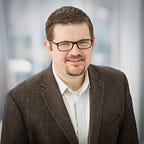Algae Farming
Part five of our “Accelerating AgTech” series that profiles exciting ag startups and the accelerators that help them to be successful. Parts one, two, three, and four.
“What’s in the water out there?”
If it’s wastewater, the answer is probably: nitrogen and phosphorus.
Water treatment centers have traditionally just cleaned the water, using chemicals and bacteria. They are now seeking more sustainable alternatives in the midst of stricter scrutiny and higher environmental standards.
One of those alternatives is algae farming.
Nitrogen and phosphorous leaving farmland and cities alike ends up in our waterways, creating hypoxic zones. These zones are extremely destructive to local ecosystems. I wrote about this issue in a previous post entitled “Creating Win-Win Solutions for Agriculture and Conservation”.
As it turns out, algae, like plants, thrive on phosphorous and nitrogen. Under the right conditions, they can convert these elements from liquid form to a solid (algae) that is easily removed before ending up in waterways.
The trick is knowing how to create and manage those conditions.
I spoke with Dr. Martin Gross of Gross-Wen Technologies on the “Future of Agriculture” Podcast. Dr. Gross believes they have created a system that can effectively grow micro-algae quickly and efficiently, ultimately removing large amounts of nitrogen and phosphorous.
Focus on the Farming
Dr. Gross and his business partner and former professor, Dr. Zihyou Wen, did not set out to build a new water cleaning system.
Instead, they have always been most interested in building the optimal way to farm algae.
“What we really made was a very efficient way to grow algae” says Dr. Gross, adding that their initial focus was to find a low-cost way to grow algae for biofuels.
“Algae needs really five things to grow: nitrogen, phosphorus, water, sunlight, and CO2.” — Dr. Martin Gross of Gross-Wen Technologies
The key was to develop a system that provides for ample amounts of water, sunlight, and CO2 so that the algae could take up as much of the nitrogen and phosphorous as possible.
This lead them to create the revolving algal biofilm system. A water treatment facility is able to “bolt on” this system to their treatment process. Not only does it remove the chemicals from the water, but the final product (the algae) can be sold for value-added products like feed, fuel, or even bioplastics.
How the Algae Farming System Works
Here is how Dr. Martin Gross describes his patented algae farming system:
“The technology is really very simple. (It’s) a series of vertically oriented conveyor belts. You could think of a treadmill that’s pointed straight up. These vertical conveyor belts are slowly rotating into a liquid. That liquid is wastewater in our case (that has) nitrogen, phosphorus, and water. So these vertical belts are slowly rotating into a liquid, where a very small amount of the belts submerge into the liquid, and it gets water, nitrogen, and phosphorus from the liquid. Because algae is like any other plant like corn or soybean, where it needs nitrogen and phosphorus to grow. You can think of algae as a microscopic plant.”
The conveyer belts allow for the algae to receive enough water, sunlight, and CO2 by passing the film in and out of the water.
As for the business model, the municipality or water treatment company pays to have the system installed. Gross-Wen sends someone out to collect the harvested algae, and then markets and sells the algae for the municipality. The revenue generated from selling the algae is then shared among both entities.
When it comes time to remove the algae from the film, this system makes it easy because you just scrape the algae off of the belts.
The end result is a 95%+ removal of the targeted pollutant.
This is a fantastic example of agriculture solving complex problems outside of just food production. I highly encourage you to listen to the full episode with Dr. Martin Gross on the “Future of Agriculture” Podcast.
